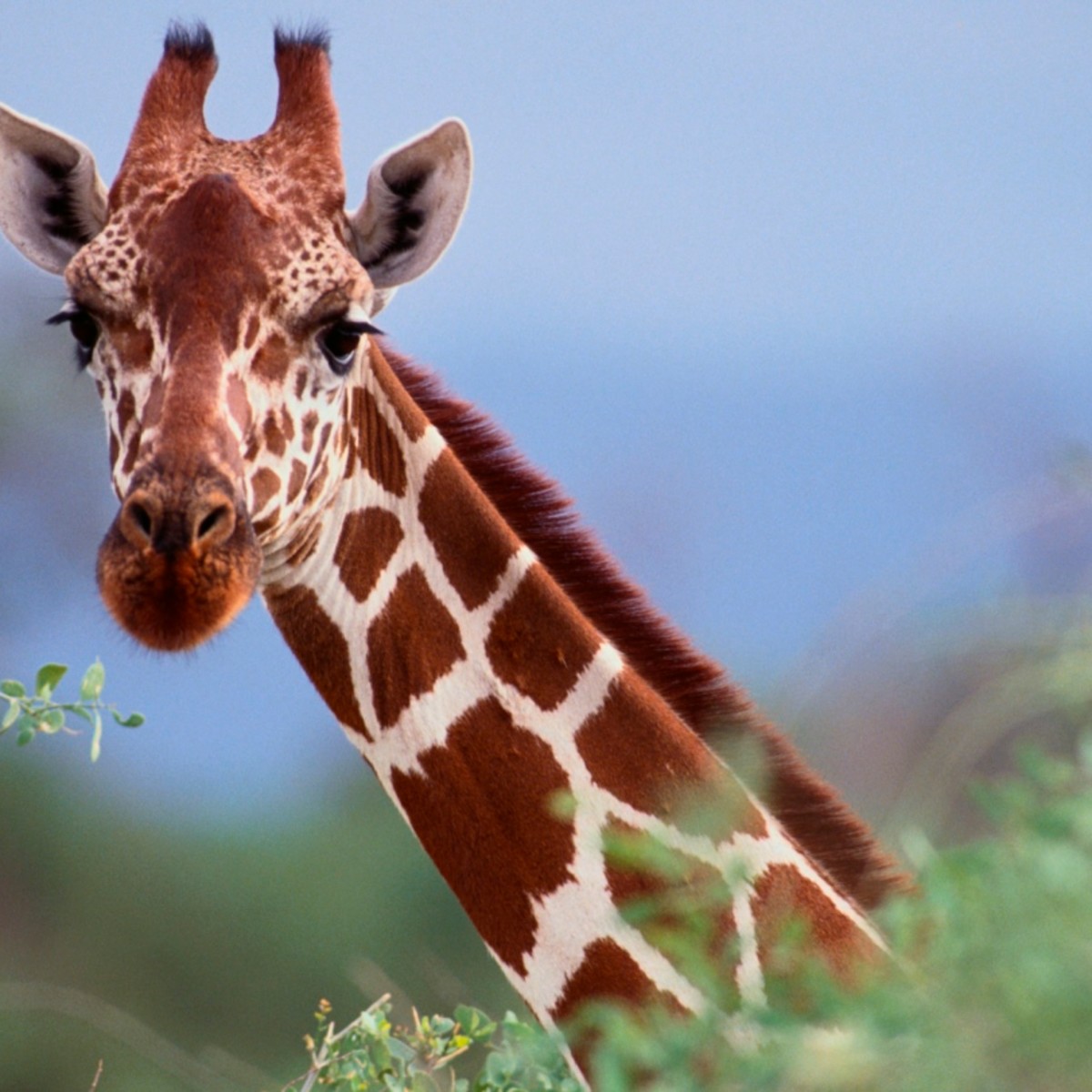Giraffe
Giraffes are the world's tallest mammals, known for their long necks, distinctive coat patterns, and stately appearance. They are native to the African savannah and woodland regions. Here’s a comprehensive look at these unique animals:
Classification
Scientific Name: Giraffa camelopardalis
Family: Giraffidae
Order: Artiodactyla
Physical Description
Size: Adult giraffes typically reach heights of 4.3 to 5.7 meters (14 to 19 feet), with males being taller than females.
Weight: They can weigh between 800 and 1,300 kilograms (1,764 to 2,866 pounds).
Appearance: Giraffes have a distinctive coat with patches of color that can range from orange to brown, separated by white or light-colored lines. Each giraffe’s pattern is unique. They have long legs, a long neck, and a relatively short body. Their horns, called ossicones, are covered in skin and are a characteristic feature of both males and females.
Habitat and Distribution
Habitat: Giraffes are found in various habitats from dry savannahs to woodlands, wherever trees are available to provide leaves for food.
Distribution: They are native to Africa, primarily south of the Sahara. However, their populations are fragmented and mostly confined to protected areas.
Behavior
Diet: Giraffes are browsers, primarily feeding on the leaves, fruits, and flowers of woody plants. Acacia species are commonly eaten. They have a specialized tongue and lips that are tough and capable of handling thorny foliage.
Social Structure: Giraffes are social animals and are often seen in groups, although the composition of these groups can be fluid. They do not have strong social bonds like elephants, but they do engage in communal care for the young.
Reproduction: Females give birth standing up after a gestation period of about 15 months. A single calf is born, which can stand and run within a few hours of birth.
Conservation Status
Threats: Giraffes face several threats including habitat loss due to agriculture and human settlement, poaching for their meat and hide, and civil unrest in parts of Africa.
Conservation: Giraffes are listed as vulnerable on the IUCN Red List, with some subspecies being endangered or critically endangered. Conservation efforts include habitat protection, anti-poaching measures, and translocation projects to re-establish populations in suitable habitats.
Interesting Facts
A giraffe's neck is too short to reach the ground, so it must awkwardly spread its legs or kneel to drink water.
Despite its long neck, a giraffe has the same number of neck vertebrae (seven) as most other mammals, but each vertebra is greatly elongated.
Giraffes can run as fast as 35 miles per hour over short distances and cruise comfortably at 10 miles per hour over longer distances.
Giraffes play a significant role in their ecosystems, helping to shape plant growth and providing a food source for predators like lions and hyenas. They are also important for ecotourism, which can provide essential funding for conservation efforts.

Комментарии
Отправить комментарий